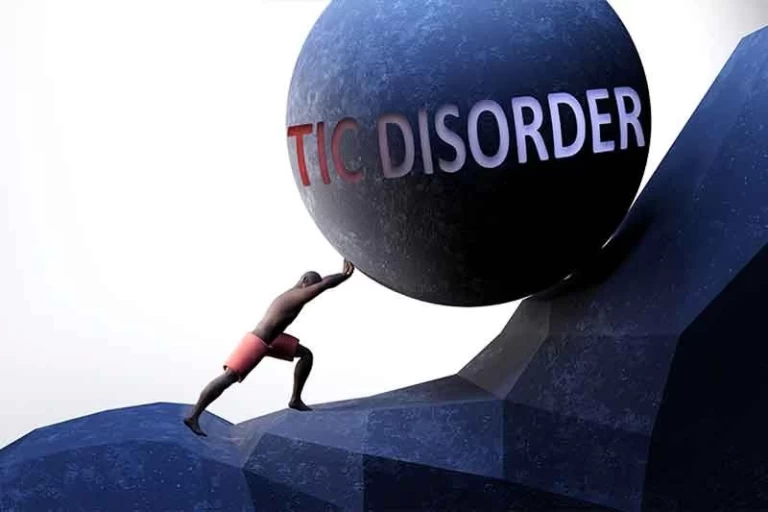
A transient tic disorder is a condition that causes one or many involuntary briefs, repeated, movements, or noises. These tics, movements or noises, can be either vocal or motor and interfere with daily activities and quality of life.
What Causes Transient Tic Disorder?
While there is no known cause of transient tic disorder, there has been a natural treatment that has helped tics go away.
There is some research that suggests transient tic disorder could have a relation with neurotransmitters, chemicals in the brain that transmit nerve signals to your cells, and medications that try to help transient tic disorder do alter the patient’s neurotransmitter levels.
It is also believed abnormalities in the brain could be responsible for the tics as well. These same abnormalities are known to cause other mental conditions including attention deficit hyperactivity disorder and depression.
Symptoms of Transient Tic Disorder
Transient tic disorder causes one to make involuntary sounds or movements and may appear to get worse with stress. These sounds and movements do not occur while sleeping. Tics involve the following:
- Facial tics
- An overwhelming urge to make movement
- Involuntary movement of arms, legs, or other areas
- Movements occur repeatedly without any rhythm
- Brief, jerky movements such as blinking, kicking, raising eyebrows, sticking out the tongue, and clenching the fists
Sounds associated with transient tic disorder include:
- Grunting
- Hissing
- Sniffing
- Snorting
- Squealing
- Throat clearing
- Moaning
- Clicking
When tics first begin to occur, it is important that the family does not call attention to the tics occurring. The reason behind this is unwanted attention to the tics occurs, it may cause tics to become worse. If a person is experiencing severe tics that interfere with school or work, the most common treatment options are therapy and medications.
Treatments Available
Transient tic disorder treatments include therapy to help their behavioral habits by changing the way the person behaves when they experience the “tension” or “pressure” only relieved by the tic.
Therapy helps the patient identify stressors and recognize the “trigger” feeling preceding the tic in order to reduce the triggers and react in an alternate manner that can help reduce the tension they experience without resorting to the tic.
Diet changes may have a positive effect on transient tic disorders; however, diet changes should not be relied on for treatment. Diet changes may not make a large difference in how often tics occur, but it may help the psychological stress or other symptoms associated with the transient tic disorder.
Medication is another treatment option available for those with transient tic disorder; although, it is not the first line of treatment. Medication is only prescribed when tics interfere with functioning and if all other treatment options have had no success.
While several medication options exist, they each begin at the lowest dose possible to reduce the risk of their side effects. Side effects associated with the medications prescribed could result in the patient taking even more medication to help with the side effects.
Another treatment option that many are unaware of, is a safe and natural treatment that focuses on brain stem health: Upper cervical adjustments.
A Natural Treatment: How Does Upper Cervical Help?
As stated earlier, the cause of transient tic disorder is not exactly known. However, professionals do believe it could be due to abnormalities in the brain, and some research as shown a possibility of it being linked to neurotransmitters.
Upper cervical adjustments are made to help ensure the patient has no misalignment that is causing pressure on their brain stem. When pressure is placed on the brain stem, it can change how the brain functions and mess with your body’s brain to body signals – causing it to react differently.
In a case study involving an 8-year-old boy with a tic disorder, they have suggested upper cervical adjustments could be responsible for reducing and eliminating his symptoms. (Michael W. Shreeve, 2013) In upper cervical adjustments, very gentle, precise movements are made to help adjust your upper cervical spine (located under the base of your skull) to remove the pressure that is causing interference that changes the way your body will normally function.
An upper cervical alignment may occur from a fall, contact sports, car accident, heavy lifting, poor posture, or even the natural aging process. Depending on the severity of the misalignment and how long your upper cervical spine has been out of alignment, more adjustments may be needed.
No matter the case, the goal is always the same: to adjust the patient’s upper cervical spine as little as possible until that area of the body heals and repairs itself enough to hold the correct position on its own.
Unlike general chiropractic, upper cervical adjustments do not have great force or any sort of “cracking” involved.
These adjustments are safe for any age, take the pressure off the brain stem, and allows your body’s functions and signals to be restored so the body may return to working as it should.
Many patients have noticed a difference in their bodies in as little as one adjustment! The reason behind this is as soon as interference is removed, your brain to body signals begin to work properly and the body begins to heal and repair any injured areas immediately.
Removing this pressure helps the brain get the oxygen it needs and relaxes the nerves that might have been irritated by the misalignment.
With the possibility of transient tic disorders being linked to chemicals in the brain that transmit nerve signals to your cells, it is no wonder upper cervical can help as it helps restore your brain to body signals. In addition, many other conditions that are linked to brain health such as depression and ADHD have benefited from these adjustments.
Therefore, if there is a connection between transient tic disorders and abnormalities in the brain, upper cervical can be a very beneficial treatment option.
References
Michael W. Shreeve, D. F. (2013). Resolution of Tic Disorder in an 8-Year Old Boy. Retrieved from http://grosticprocedure.com




Leave a comment